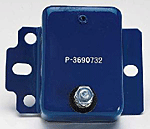challyrtse
Member
I upgraded to an electronic ignition setup when replacing my engine years ago. No problems there, but recently I had read that if you do this it is essential to upgrade to a "new style" voltage regulator and start using a two-field alternator.
I did not do this back then, and have run the car for years since. Is this really necessary? I would hate to be slowly damaging the system due to my own lack of knowledge...
Also, if you do upgrade to the newer voltage regulator, how detailed of a swap is that?
I did not do this back then, and have run the car for years since. Is this really necessary? I would hate to be slowly damaging the system due to my own lack of knowledge...
Also, if you do upgrade to the newer voltage regulator, how detailed of a swap is that?


















